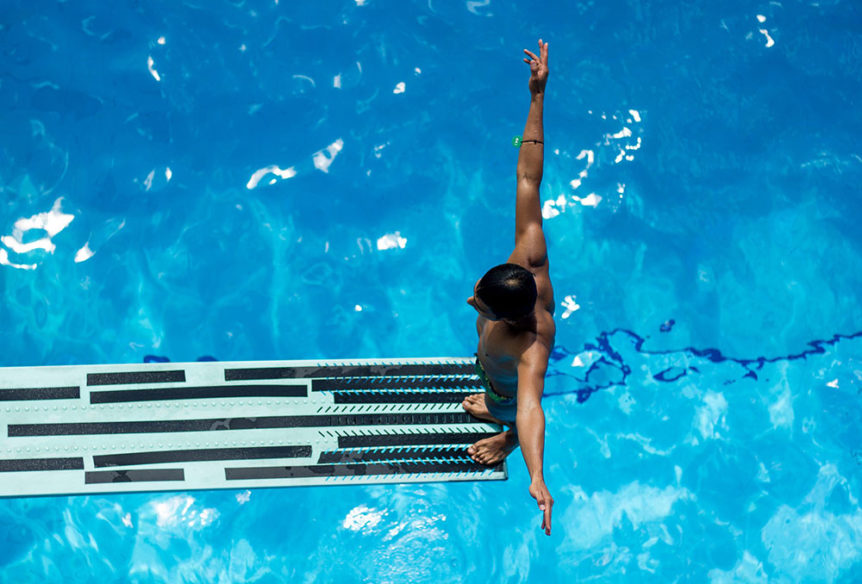Levels of Corrosion Protection for Reinforced Concrete
There are three basic levels of active (electrochemical) corrosion protection available. These are generally referred to as:
• Corrosion prevention;
• Corrosion control; and
• Cathodic protection
All levels are essentially similar in that a protective current is provided to prevent or reduce the corrosion activity of the reinforcing steel. They differ in terms of the intensity of the protective current and suitability for a given range of applications.
Corrosion Prevention
Corrosion prevention is defined by the National Association of Corrosion Engineers (NACE) as “Preventing corrosion from initiating even though the concrete may be sufficiently contaminated with chlorides to favor corrosion.”
For owners or managers who suspect corrosion is already underway and damage is occurring, the first step is to identify the extent of the problem. Unless corrosion is severe enough to force off the outer face of the concrete, reinforcing steel is generally hidden within the concrete slab, making any visual identification of early stages of corrosion difficult or impossible. Instead, the concrete is evaluated through field and laboratory testing to determine whether conditions conducive to corrosion exist within the concrete structure.
Chloride ion content testing identifies the concentration of chlorides in concrete at various depths to evaluate the probability a corrosive environment exists. Dust samples from incremental depths through the concrete slab are extracted and sent to a testing laboratory for analysis.
Half-cell potential testing determines the electrochemical behavior of embedded steel by measuring its electrical potential (i.e. the difference in charge from one area to the next). The greater the electrical potential, the greater the risk corrosion is occurring. Conducted onsite, the test involves removal of concrete cover over reinforcing bar, followed by the connection of exposed steel to an electrode through a voltmeter. Half-cell potential readings can be used to generate an electrical potential map, indicating areas with the greatest and least risk of corrosion.
Loss of steel reinforcement is a concern for areas where corrosion has progressed at an advanced rate. Where reinforcing bar is exposed or where concrete is cracked, delaminated, or spalled, a structural engineer should evaluate the remaining slab’s structural capacity to determine whether corrosion has compromised its loadbearing ability.
Where corrosion-induced spalls have been previously repaired, a characteristic ‘halo effect’ might be observed, with a ring of corrosion staining appearing around the patch site. Patching delaminated and spalled concrete with conventional concrete can lead to an electrochemical reaction at the interface between the existing chloride-contaminated concrete and the new concrete. The large difference in electrical potential between the two, combined with the short distance between anode and cathode, leads to accelerated corrosion. Usually, such patches need to be repaired again in just a year or two.
CORROSION CONTROL
Corrosion control is defined by NACE as “Providing a significant reduction in the corrosion rate of actively corroding steel in concrete.” Corrosion control can result in an increased service life of the rehabilitated targeted sections of precast members at a relatively low incremental cost. This is how sacrificial corrosion protection or mitigation is most often used. Corrosion control may or may not completely stop ongoing corrosion, but the reduction in corrosion activity will significantly extend the service life of existing corroding structures. In corrosion control applications, the conditions for corrosion (such as chloride contamination) already exist and corrosion may have already initiated in some areas, although have not progressed to the point of concrete damage. The applied current necessary to address corrosion activity (after corrosion initiation) is higher than the current required for corrosion prevention. Therefore, either larger and/or closer spaced galvanic anodes will be required to provide corrosion control.
CATHODIC PROTECTION
One way of protecting the steel is through cathodic protection. ln this method, the corrosion is stopped by reversing the processes of electrochemical action that cause the corrosion. By applying a direct current to the rebar in opposition to the current causing the corrosion, the corrosion causing current is overcome.
An effective way to achieve long-term corrosion protection of existing chloride contaminated structures, or to provide extended service life to target locations on new precast members, is to use sacrificial protection systems. Galvanic protection is achieved when two dissimilar metals are connected. The metal with the higher potential for corrosion will corrode in preference to the more noble metal. As the sacrificial metal corrodes, it generates electrical current to protect the reinforcing steel. With this type of cathodic protection system, the galvanic protection system voltage is fixed and the amount of current generated is a function of the surrounding environment. Galvanic anodes will generate higher current output when the environment is more corrosive or conductive—for example, where there is higher chloride concentrations, and where current output exhibits a daily and seasonal variation based on moisture and temperature changes. Sacrificial protection systems are low-maintenance, do not require an external power supply, and are compatible with prestressed and post-tensioned steel.
As discussed with our previous Blog article, when sacrificial anodes cannot deliver sufficient current to prevent corrosion, impressed current cathodic protection (ICCP) may be used. As with passive cathodic protection, ICCP reverses the electrochemical process of corrosion through the action of an applied electric potential—in this case, the current arises not from the inherent properties of the materials themselves, as it does with galvanic coupling, but from an external power source.













